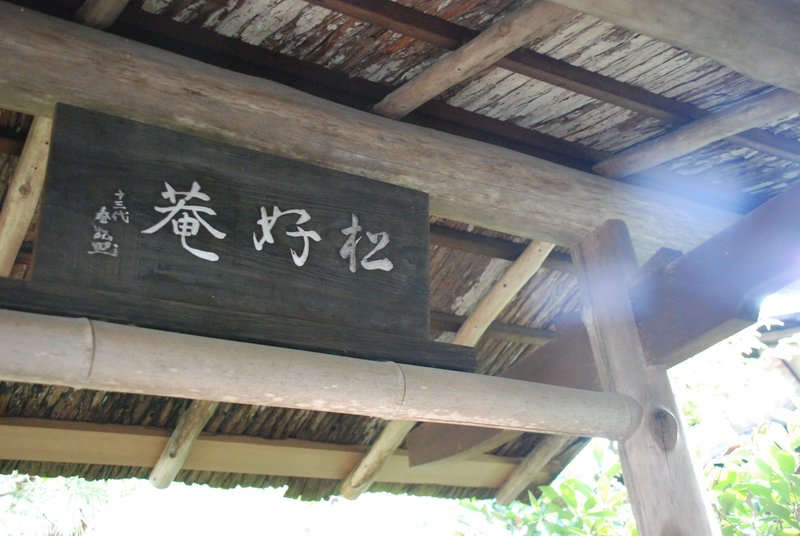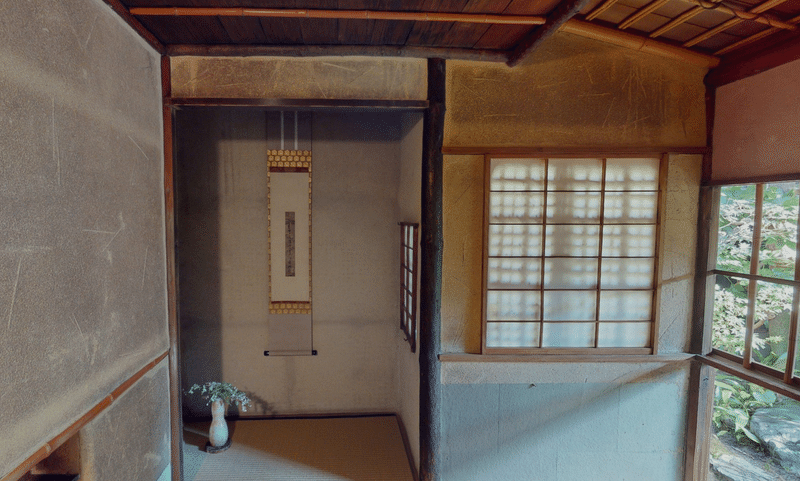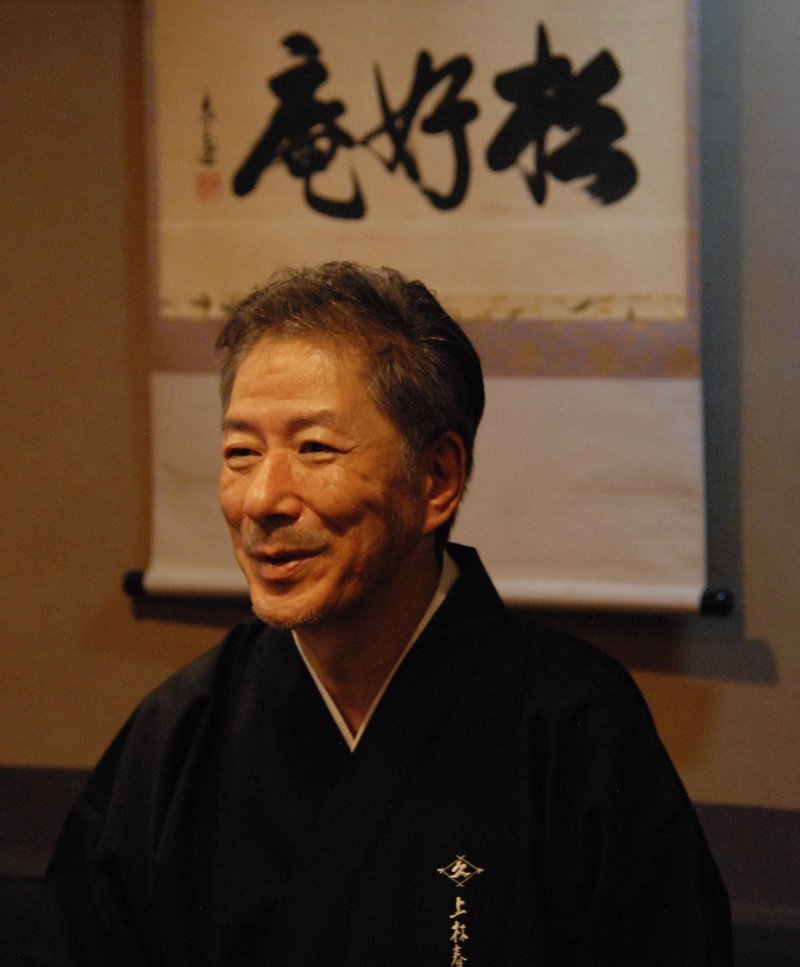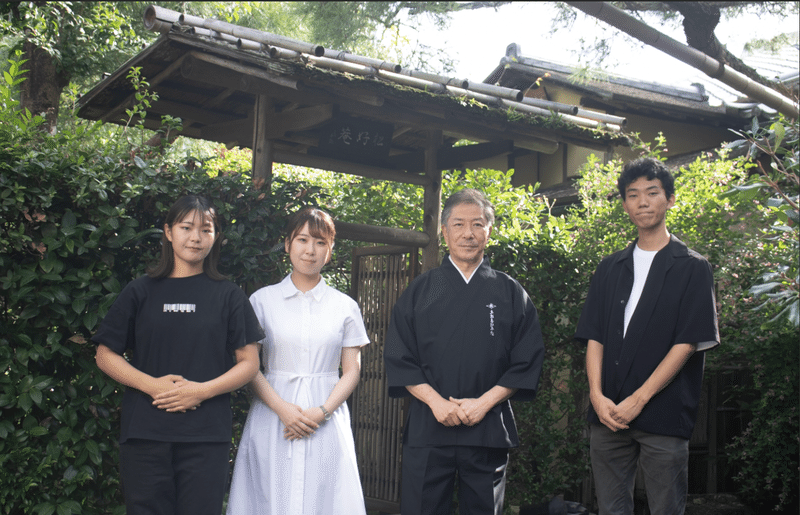
Passing Down Shokouan to Future Generations: Interview with Mr. Kanbayashi Syunsyo, the 15th
Have you ever heard of Shokouan, a tearoom with a history of over 350 years?
Shokouan was located on the premises of the Kanbayashi family, who were highly regarded as 'Ochashi' (tea masters) by Toyotomi Hideyoshi.
The current Shokouan, located within the Uji Kanbayashi Memorial Hall, is not open to the public.
And now, we are excited to share that, in collaboration with the TAISETSU Archives, we have succeeded in preserving this incredibly valuable Shokouan as a 3D model, making it possible for everyone to experience it!
(The 3D model of Shokouan is featured at the end of this article.)

“Mr. Kanbayashi Syunsyo, the 15th”
In the Edo period, Syunsyo family held the highest position among tea masters, known as 'Gomotsu Ochashi' (Master of the Imperial Treasury Tea) and received patronage from the shogunate and various daimyos (feudal lords).
In this interview, one of our interns, Yabuuchi, explored Mr. Kanbayashi's thoughts on what he wishes to preserve through the 3D data of Shokouan and his involvement in the TAISETSU Archives,.
*This article is based on an interview conducted in September 2023
What We Want to Preserve at Shokouan
Shokouan was constructed around 350 years ago for a unique purpose - the lord of the Hachisuka family in Awa, Tokushima Prefecture, built it to stop by in Uji and enjoy a day of tea during his official travels (Sankin-kōtai).
So, what happened at Shokouan after that?
Yabuuchi: About 350 years ago, Shokouan is said to have been built. Are there any ancient books or records regarding the old Shokouan from that time?
Mr. Kanbayashi: About 250 years ago, there was a large fire in Uji, causing significant destruction over a considerable area.

It's said that only Shokouan remains in this residence, and at that time, there might have been some diaries or notes to some extent, but unfortunately, they do not exist today.
Yabuuchi: In the past, once something was lost, it couldn't be restored, right?
Mr. Kanbayashi: Yes. That's why we don't even know the exact year it was built.
Yabuuchi: I see. This time, Shokouan is going to be preserved as 3D data. What do you want to preserve about Shokouan?
Mr. Kanbayashi: Definitely, its wooden structure. Preserving traditional Japanese houses, in particular, is extremely challenging. Since they're made of wood, numerous repairs have been done over time to its damaged areas.
One pressing issue is that recently, we've been experiencing rains unlike what we've encountered before, and it's starting to cause damages to new areas. I believe that restoring these areas will be a challenge moving forward.
As long as I'm alive, I want to ensure that we preserve it as close to its original form as possible.
What Tearooms Mean to Mr. Kanbayashi
While there are many etiquettes in tearooms, Mr. Kanbayashi mentioned that understanding the meaning behind each etiquette makes it less daunting, as each one reflects consideration for the guest.
Yabuuchi: Tearooms are crucial places for the spirit of hospitality. How do you welcome guests at Shokouan, in terms of your feelings, when they enter the tearoom?
Mr. Kanbayashi: For example, the way interior items are chosen and arranged.
Not only arranging seasonal flowers in the tearoom, but also arranging flowers based on details such as the guest's company or name. We create arrangements tailored to the individual. It is these personalized touches that truly resonate with the guests, leaving a profound impression. It's not just about the taste of the tea; it's about the entire process being an etiquette and a source of enjoyment from start to finish. If there's an opportunity, I'd encourage you to actively visit the tearoom.
Even if we don't do anything, if you are moved or impressed in some way, it's perfectly fine for you to express your surprise and astonishment aloud.

Yabuuchi: Is that so! I had the impression that tearooms were quiet, so I thought talking or chatting wasn't encouraged...
Mr. Kanbayashi: Conversing in the tearoom is indeed one of the great pleasures. If there's something you don't understand, it is more enjoyable to ask and learn before leaving. Asking questions in your own words or listening to stories, or even responding to stories shared; I encourage everyone to actively engage in these conversations.
It's not just about strict manners; one of the significant joys is to have fun, learn, and take that experience back with you. This is the meaning of a tearoom.
The Present and the Future Will Continue
Yabuuchi: You collaborated with the NOKOSU Project this time. How do you feel about preserving (spaces) as 3D data?
Mr. Kanbayashi: With time, the old, good heritage is naturally being filtered out.
Preserving them with new technologies is truly wonderful. Not just for preserving Shokouan, but for such activities in general, I encourage proactive engagement.
Yabuuchi: Thank you very much.

In the end, I’d like to introduce his impressive words made for us, students: “History isn't just about the past up to the present; it's about continuing from now into the future. Looking ahead to the future, we need to leave our present time for the generations to come. I hope you live the present in a way you won't be ashamed of.”
Passing down the present to the future with histories. We will also endeavor living the present through preserving things and thoughts in from Kyoto to all over the Japan at the TAISETSU Archives,.
Editor's Note
In this edition, interns who went for their first interview share their individual experiences and reflections.

Tagami Sakura (Doshisha Women’s College of Liberal Arts)
- Stepping into Shokouan, I was captivated by the lush, beautiful garden. Although I felt nervous and uneasy, I consider it an honor to have the opportunity to cover this precious place, Shokouan.
Yabuuchi Mayu (Doshisha Women’s College of Liberal Arts)
- I learned that every etiquette in tearooms hold a meaningful connection to considering others. During the interview, I could sense Mr. Kanbayashi's consideration for people in every word and action. Taking inspiration from Mr. Kanbayashi, I will strive to embody the spirit of hospitality in my daily life.
Matayoshi Naru (Kyoto University)
- Being able to enter and photograph the tearoom, a place not usually accessible, was an incredibly rare experience. It was my first time on such a shoot, and there were many points for reflection. However, I will endeavor to apply the lessons learned from Shokouan in future assignments.
Mr. Kanbayashi never forgets the spirit of hospitality towards others regardless of the circumstances. Through this interview, we, the interns engaged in the NOKOSU Project, reaffirmed our desire not only to preserve a 3D model as data but also to preserve the thoughts and sentiments of individuals like Mr. Kanbayashi.
You can view the 3D model of Shokouan here.
=====================================
Click here for the website of Syunsyo Kambayashi Honten
「Uji Kanbayashi Memorial Hall」
To showcase the historical materials passed down through the Kanbayashi Syunsyo family, the 'Uji Kanbayashi Memorial Hall' was established, utilizing the only surviving 'Uji tea master's longhouse gate' to display items such as Luson jars used to carry tea to the shogunate and daimyos, and letters from Toyotomi Hideyoshi.
Address: 38 Uji Myoraku, Uji City, Kyoto 611-0021, Japan
TEL: 0774-22-2509 (Main Retail Store)
FAX: 0774-22-2519 (Main Retail Store)
Opening Hours: 10:00 AM - 4:00 PM
Closed on Fridays
Admission Fee: 200 yen
この記事が気に入ったらサポートをしてみませんか?
